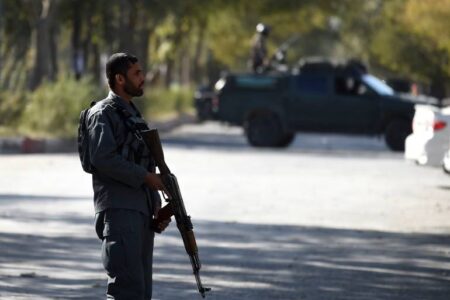
Afghanistan terror violence jumps to 50 percent amid the peace talks
Violent attacks in Afghanistan have surged by 50 percent over recent months, even as the Kabul government and the Taliban launched unprecedented peace talks in September, a US watchdog warned on Thursday.
Despite brief lulls provided by two temporary ceasefires over the summer, fighting has raged across the country as the Taliban launched devastating attacks on provincial capitals and security installations, with fears the violence may jeopardise negotiations.
Attacks against Afghan forces and civilians were 50 percent higher in the three months to the end of September when compared to the previous quarter, the US Special Inspector General for Afghanistan Reconstruction (SIGAR) said in its quarterly report to the US Congress.
“Overall enemy-initiated attacks this quarter were also characterized as ‘above seasonal norms’,” the report added.
The watchdog reported 2,561 civilian casualties this quarter, including 876 deaths, up 43 percent from the April to June period.
The report’s publication comes as scattered calls to boycott the ongoing peace talks have been raised following back-to-back attacks on education centres in Kabul claimed by ISIL, but which some government officials insist were carried out by the Taliban.
Earlier this week, at least 22 students were killed in Kabul University in an attack claimed by ISIL.
Little progress has been made in meetings between Afghan government negotiators and the Taliban since the talks started on September 12, with negotiations stalled over the basic framework of talks and an agenda still undecided.
Both sides have routinely accused each other of upping hostilities and killing civilians.
Zalmay Khalilzad, the US envoy who negotiated a separate deal with the Taliban in February, has repeatedly warned that “continued high levels of violence can threaten the peace process and the agreement and the core understanding that there is no military solution” to the Afghan conflict.
US influence over Afghanistan’s battlegrounds is on the wane, however, with the Pentagon looking to withdraw all its troops that remain in the country by next May.
Confusion over the ongoing US election vote count has raised further questions over whether Washington’s withdrawal from Afghanistan after 19 years of war will continue on schedule or accelerate if Trump clinches another term in the White House.
The Trump administration signed an agreement with the Taliban in February, which called for the withdrawal of US forces and a guarantee by the Afghan armed group not to harm US security interests.
Source: Al Jazeera





